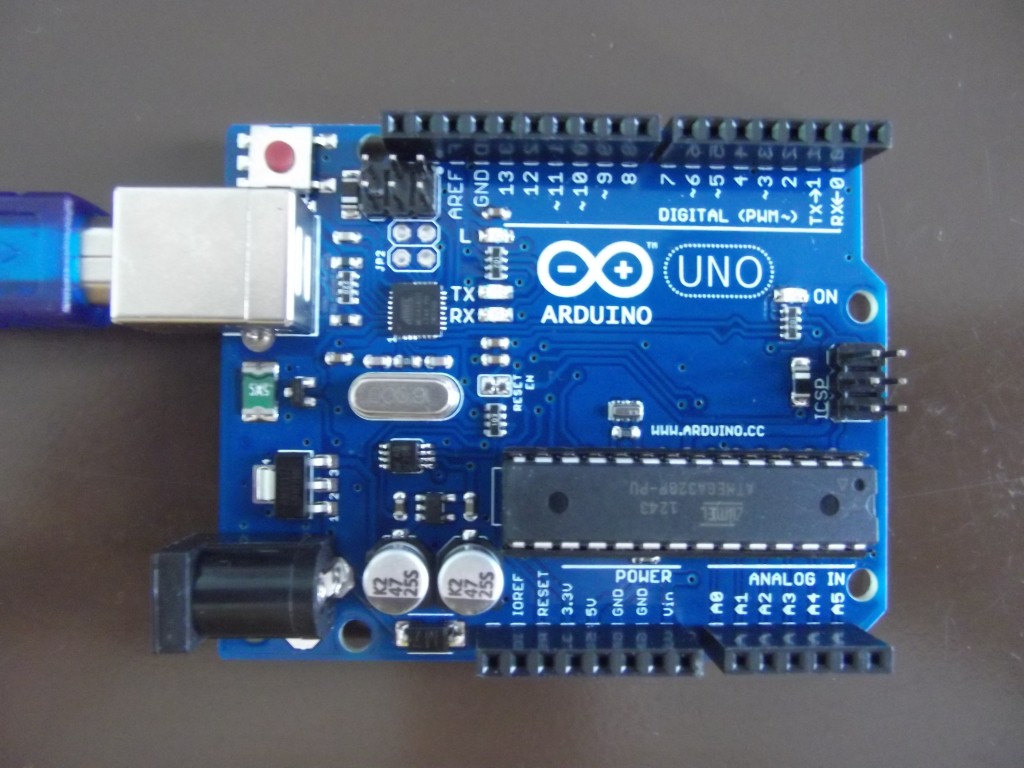

Try to mark the path on the schematic along which the electric signal flows whenever you makes an application.

It would look a little bit too complicated and confusing if you don't have much experience of electrical engineering, but it would start making sense as you keep checking the schematics whenever you are trying something with the board. First thing you may refer to would be the schemeatics of the board. If you go to Arduino Uno home page, you would get all the detailed information and related documents about the board. My sight is already getting weaker due to aging -:), so often I take the picture of the board with my smartphone and look into the details on the board like this. If you want to know some more details of the board and major chips and I/O (Input/Output) pins on the board, following magnified picture would help you. But if you load a developed program onto the board and just keep running it without PC, you need power adaptor. So you need to have USB-A to USB-B convert cable.ĭo I need any power adator as well ? If you are using Arduino connected to PC all the time (as in most training or study), you don't need any additional power adaptor. As I mentioned in Before You Buy page, the type of USB is USB-A. So you are ready to invest a little more in order to operate this board. If you buy (or order) Arduino board only, it would come with the board only without any USB or power adaptor or anything else. If it is US/Canada, you would see 'Arduino' and if you are in other country, you would see the label 'Genuino'. Depending on where you bought it you may see different labels on the board.
#Arduino uno r3 programming install

If you haven't purchased any board yet or you just bought it but no previous experience with Arduino, this page would help you get familiarized with the board and software environement. I will describe some details (or quick tips) for the board that I first used. Arduino - Arduino Uno (R3) - ShareTechnote


 0 kommentar(er)
0 kommentar(er)
